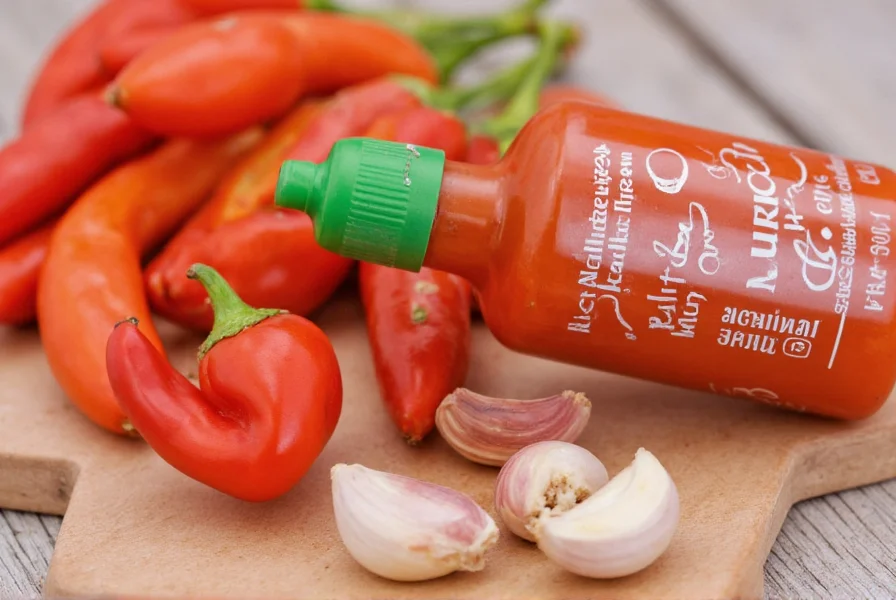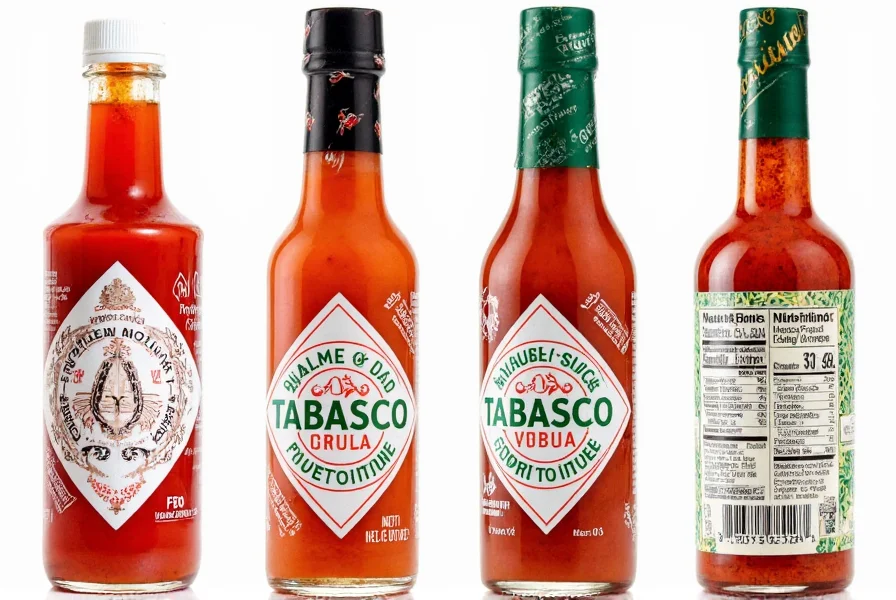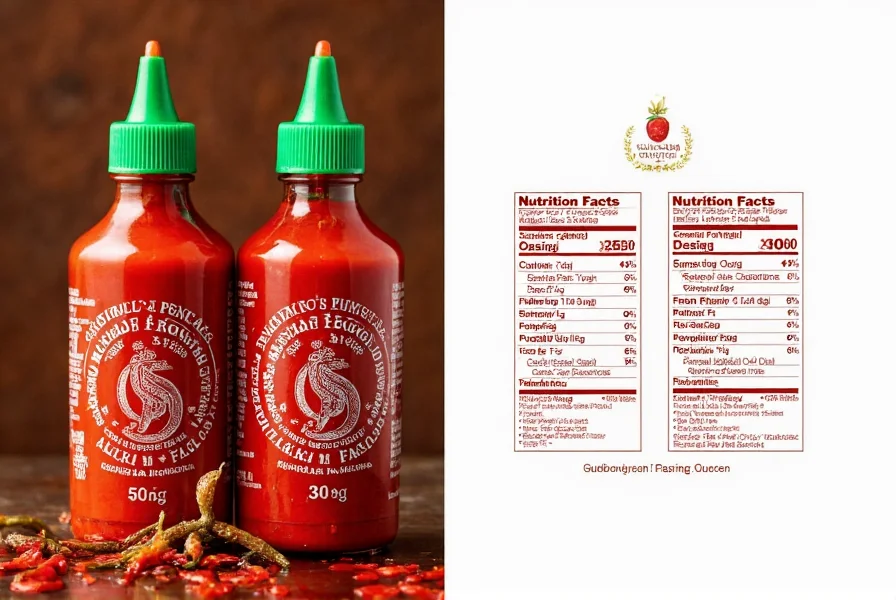When you reach for that iconic rooster bottle, you're probably wondering: is sriracha actually good for you? This popular chili sauce has become a staple in kitchens worldwide, but understanding its nutritional profile helps you make informed choices about incorporating it into your diet.
Nutritional Breakdown of Sriracha Chili Sauce
Let's examine the complete nutritional information for sriracha chili sauce based on a standard 1 teaspoon (5g) serving, which represents a typical amount used to flavor dishes:
| Nutrient | Amount per Serving | % Daily Value* |
|---|---|---|
| Calories | 5 | <1% |
| Total Fat | 0g | 0% |
| Sodium | 110mg | 5% |
| Total Carbohydrate | 1g | 0% |
| Sugars | 1g | - |
| Protein | 0g | 0% |
| Vitamin C | - | 2% |
*Percent Daily Values are based on a 2,000 calorie diet. Your daily values may be higher or lower depending on your calorie needs.
Understanding Sriracha's Ingredients and Their Impact
Sriracha's distinctive flavor comes from its simple yet potent ingredient list. The standard formulation includes:
- Chili peppers - The primary ingredient providing capsaicin, the compound responsible for heat
- Sugar - Typically about 1g per teaspoon, contributing to the balanced sweet-heat profile
- Salt - Significant sodium content (110mg per tsp) is the main nutritional consideration
- Garlic - Adds depth of flavor and potential health benefits
- Vinegar - Provides acidity and acts as a preservative
- Preservatives - Potassium sorbate and sodium bisulfite to maintain freshness
Unlike many condiments, sriracha contains no artificial colors or flavors. The vibrant red color comes naturally from the ripe red jalapeño peppers used in production.

Health Considerations: Benefits and Concerns
Sriracha's nutritional profile presents both potential benefits and considerations for health-conscious consumers.
Potential Benefits of Sriracha Consumption
The capsaicin in chili peppers may offer several health advantages:
- Metabolic boost - Some research suggests capsaicin may temporarily increase metabolism
- Appetite regulation - Spicy foods may help with feeling fullness
- Antioxidant properties - Chili peppers contain compounds that fight oxidative stress
- Low calorie density - Adds significant flavor with minimal calories
Nutritional Concerns to Consider
While generally safe in moderation, sriracha nutrition facts reveal some considerations:
- Sodium content - At 110mg per teaspoon, frequent heavy use could contribute significantly to daily sodium intake, especially for those monitoring blood pressure
- Sugar content - Though minimal per serving (1g), it can add up with generous usage
- Acidity - The vinegar content may affect those with acid sensitivity
Sriracha Serving Size Reality Check
One critical aspect of sriracha chili sauce nutrition often overlooked is actual consumption patterns. While the standard serving size is 1 teaspoon, many people use significantly more when adding it to dishes.
Consider these real-world usage scenarios:
- Drizzling over eggs: 1-2 teaspoons (10-20g)
- Adding to stir-fry: 1-2 tablespoons (15-30g)
- Mixing into sauces: 1-3 tablespoons (15-45g)
At these quantities, the sodium content becomes more significant - potentially contributing 330-990mg of sodium to your meal, which represents 14-43% of the recommended daily limit for most adults.
How Sriracha Compares to Other Hot Sauces
When evaluating sriracha chili sauce nutrition facts, it's helpful to compare with other popular hot sauce options:
| Hot Sauce | Calories per tsp | Sodium per tsp | Sugar per tsp |
|---|---|---|---|
| Sriracha | 5 | 110mg | 1g |
| Tabasco | 0 | 35mg | 0g |
| Cholula | 0 | 190mg | 0g |
| Frank's RedHot | 0 | 190mg | 0g |
| Harissa | 10 | 80mg | 1g |
This comparison shows that sriracha sits in the middle range for sodium content among popular hot sauces, with slightly higher calories and sugar than vinegar-based options but lower sodium than some alternatives.

Dietary Considerations for Sriracha Lovers
Sriracha's nutritional profile makes it compatible with several popular dietary approaches, with some caveats:
Vegan and Vegetarian Diets
Most commercial sriracha brands, including the popular Huy Fong Foods variety, are vegan-friendly. They contain no animal products, making them suitable for plant-based diets.
Keto Diet Compatibility
With only 1g of carbohydrates (including 1g of sugar) per teaspoon, sriracha fits well within keto dietary guidelines. The minimal carb content won't disrupt ketosis when used in typical amounts.
Gluten-Free Status
Authentic sriracha is naturally gluten-free, as it contains no wheat or gluten-containing ingredients. However, those with severe gluten sensitivity should check specific brand labels for potential cross-contamination warnings.
Practical Tips for Health-Conscious Sriracha Use
Understanding sriracha chili sauce nutrition allows you to enjoy this flavorful condiment while maintaining your health goals:
- Measure your servings - Use a measuring spoon rather than free-pouring to control sodium intake
- Balance with low-sodium dishes - Pair sriracha with foods naturally low in sodium
- Create custom blends - Mix sriracha with Greek yogurt or coconut aminos to reduce sodium concentration
- Consider timing - Using sriracha earlier in the day gives your body more time to process the sodium
- Hydrate adequately - Drink sufficient water when consuming higher-sodium foods
Conclusion: Finding Balance with Sriracha
Sriracha chili sauce nutrition reveals a condiment that's relatively low in calories but moderately high in sodium. When used mindfully as a flavor enhancer rather than a primary ingredient, sriracha can be part of a balanced diet.
The key is understanding that while sriracha isn't a "health food" per se, its minimal calorie content and potential capsaicin benefits make it a better choice than many high-calorie condiments. By being aware of serving sizes and considering your overall sodium intake throughout the day, you can enjoy sriracha's distinctive flavor without compromising your nutritional goals.
Frequently Asked Questions
How much sodium is in sriracha compared to daily recommendations?
A single teaspoon (5g) serving of sriracha contains approximately 110mg of sodium, which represents about 5% of the recommended daily limit of 2,300mg for most adults. However, since people often use more than one teaspoon at a time, the sodium content can add up quickly - two tablespoons would contain about 660mg sodium (29% of daily value).
Is sriracha suitable for a keto diet?
Yes, sriracha is generally keto-friendly with only 1g of total carbohydrates (including 1g of sugar) per teaspoon serving. This minimal carb content won't typically disrupt ketosis when used in standard amounts (1-2 teaspoons). However, those following strict keto protocols should account for these carbs in their daily totals.
Does sriracha have any significant vitamins or minerals?
Sriracha contains minimal amounts of vitamin C (about 2% of daily value per serving) from the chili peppers, but no significant quantities of other vitamins or minerals. Its primary nutritional components are sodium and a small amount of sugar. The health benefits primarily come from capsaicin rather than substantial vitamin content.
How does homemade sriracha nutrition compare to store-bought?
Homemade sriracha typically has lower sodium content since you control the salt amount, but similar calorie and carbohydrate profiles. Without preservatives, homemade versions may have slightly different nutritional values due to variations in pepper ripeness and fermentation time. The main advantage of homemade is avoiding additives like potassium sorbate and sodium bisulfite found in commercial varieties.
Can sriracha help with weight loss?
Sriracha isn't a weight loss solution, but it can be a helpful tool when used strategically. The capsaicin may provide a slight metabolic boost and help with satiety, while its low calorie content (5 calories per teaspoon) makes it a better flavoring option than higher-calorie sauces. However, any potential weight loss benefits would be minimal without an overall healthy diet and exercise routine.











 浙公网安备
33010002000092号
浙公网安备
33010002000092号 浙B2-20120091-4
浙B2-20120091-4